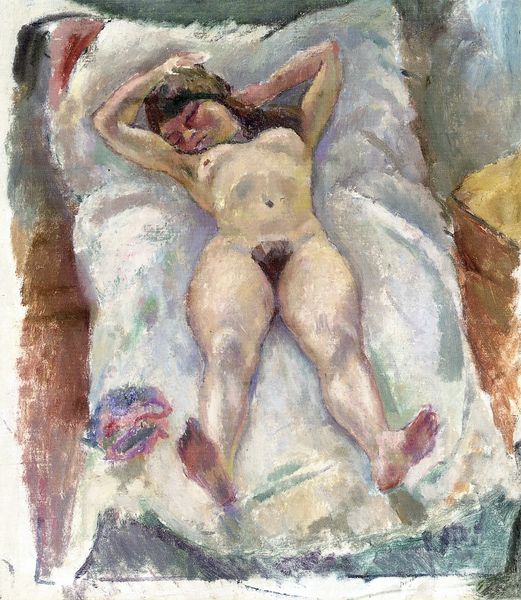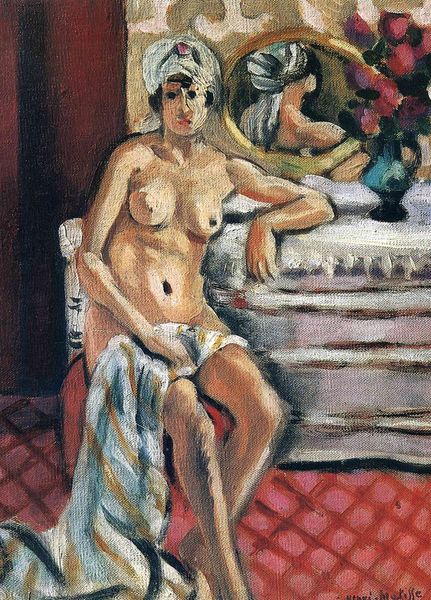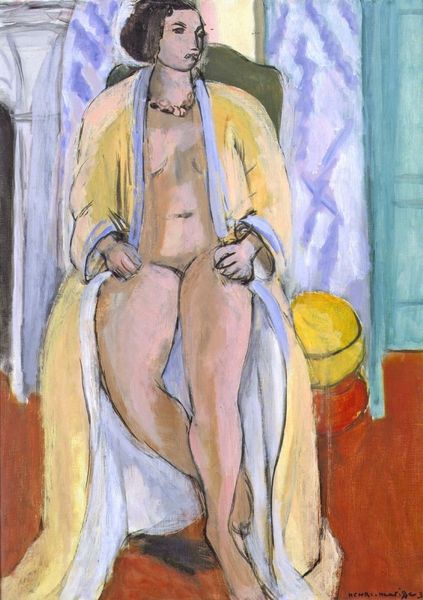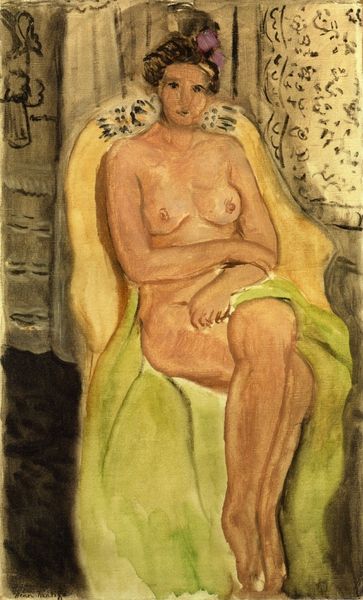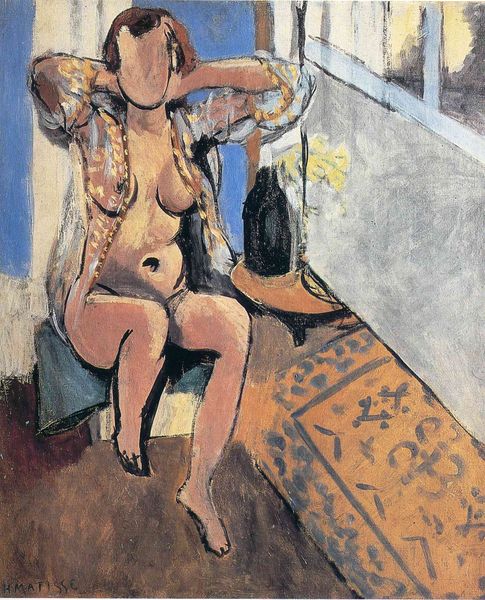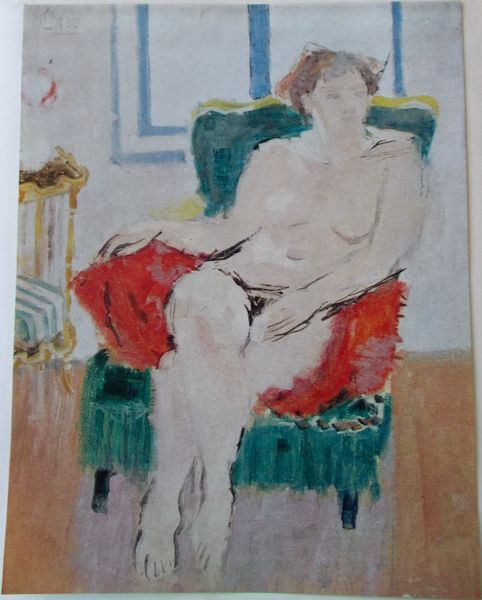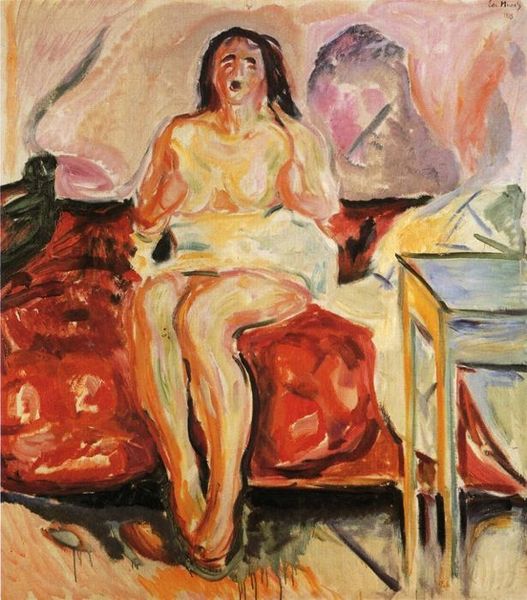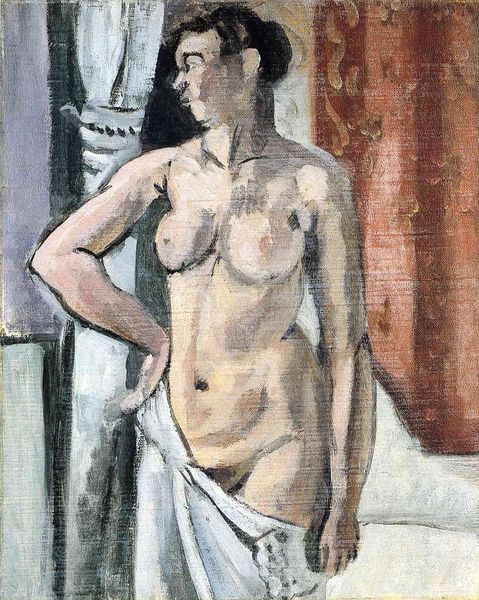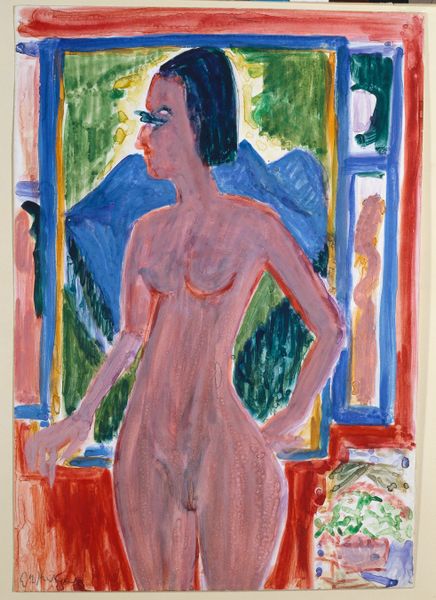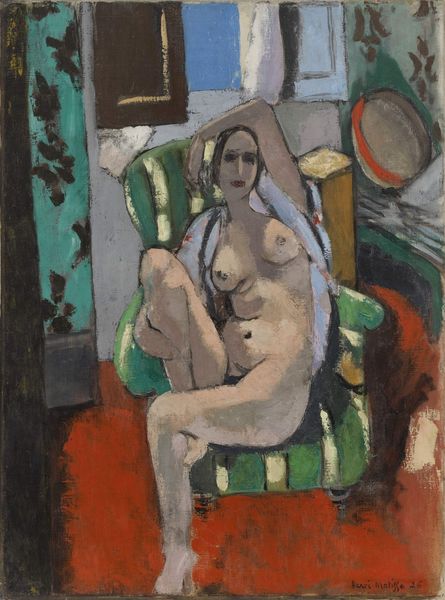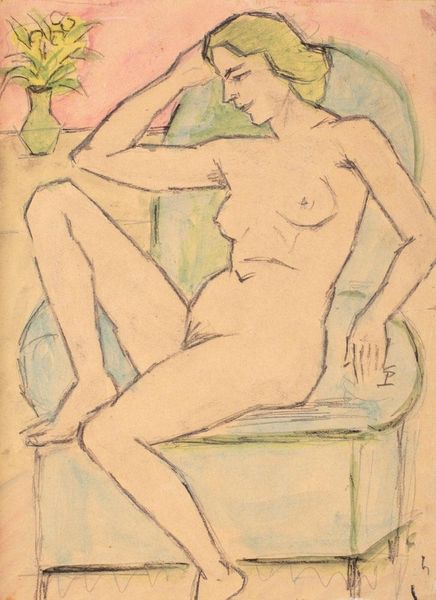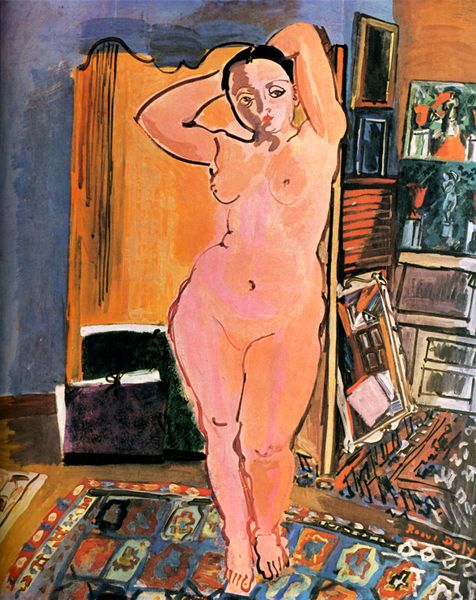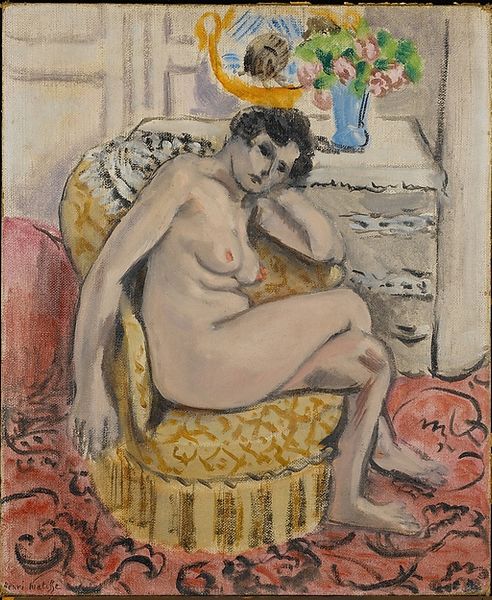
Copyright: Public domain US
Curator: Henri Matisse created "Nude in a Chair" in 1920. What strikes you most about this oil on canvas work? Editor: It has an unfinished quality, almost like a watercolor sketch blown up. I see the canvas texture showing through the thin layers of paint, giving it a very immediate feel, a moment caught in time. Curator: Indeed. And there's a lot of layering happening. Consider the repeating motif of the patterned curtain, echoed in her turban, creating almost a visual rhyme across the surface. Perhaps this reverberates within the visual psyche – this intimate space, repeated figures and details... Is this familiarity breeding safety? Or claustrophobia? Editor: I'm also thinking about Matisse's process here. Look at the confident strokes, the visible underdrawing. It reveals his decision-making, the evolution of the form, which is often hidden in finished paintings. You see the artist at work. Curator: Absolutely. Note, too, the figure’s almost iconic frontality; it resembles archaic devotional images, though repurposed for purely aesthetic, sensual enjoyment. It brings up a fascinating contrast between secular pleasure and echoes of more traditional representation of female form. Editor: It is compelling. Yet this also makes me think about labor. Did Matisse prepare his own canvases? What kind of paints was he using at the time? How were they sourced? Each material has a story and represents its own hidden economic factors within the work. Curator: Good questions. Knowing the answers provides more depth. But returning to the symbols: Her gaze seems distant, disconnected from us, inviting interpretation. Is she melancholy? Lost in thought? Editor: I wonder how much the making itself impacted the mood, and the resulting composition we see before us today. Curator: These layered interpretations feel crucial to understanding not just Matisse’s style, but how images echo throughout culture and psychology. Editor: It also reveals much to me about artistic agency, production and class at the time, as well. The intersection of the object, image, and person continue to have lasting meaning.
Comments
No comments
Be the first to comment and join the conversation on the ultimate creative platform.
